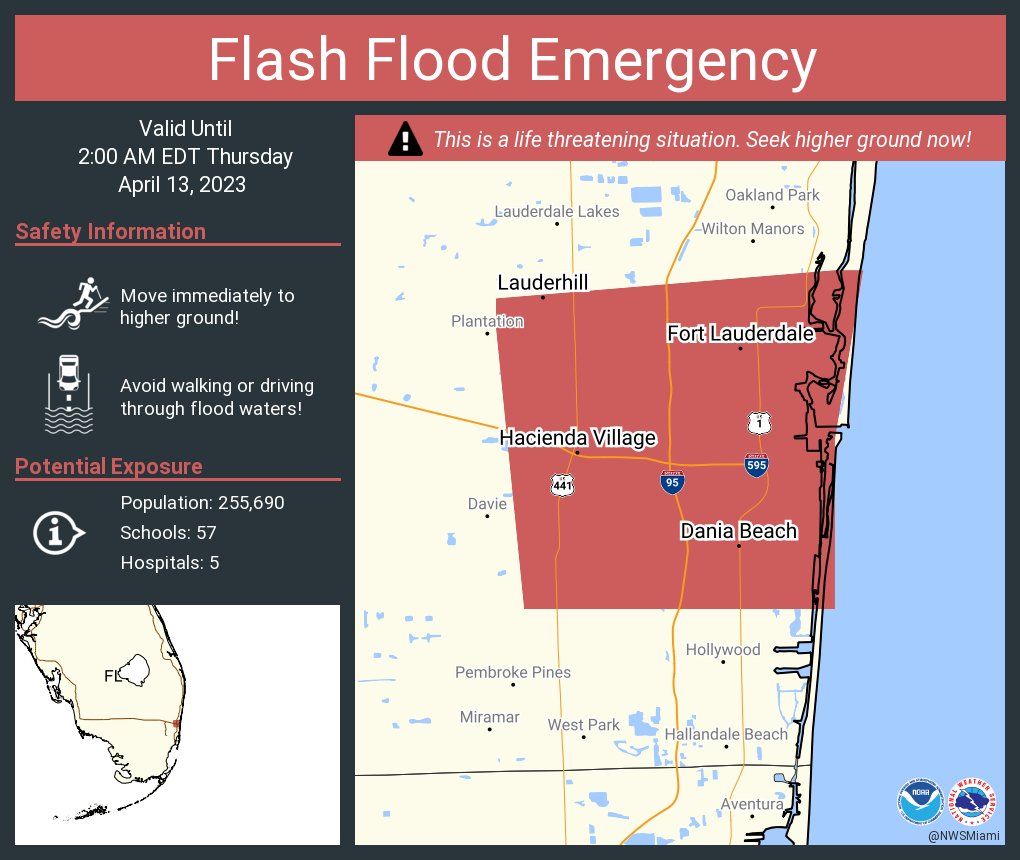Flash Flood Emergency Preparedness: A Step-by-Step Guide

Table of Contents
Understanding Flash Flood Risks
Flash flood risk assessment is the first step towards effective preparedness. Understanding your vulnerability is key to mitigating potential damage and ensuring your safety.
Identifying High-Risk Areas:
Knowing where flash floods are most likely to occur is crucial.
- Geographical Location: Areas near rivers, creeks, canyons, and low-lying regions are especially vulnerable. Mountains and areas with steep slopes can experience rapid water runoff, leading to flash floods downstream.
- Online Resources & Maps: Utilize online resources like the FEMA flood maps and your local government's websites to pinpoint high-risk zones in your community. These resources often provide historical flood data and identify floodplains.
- Historical Patterns: Research the historical flash flood patterns in your specific region. Understanding past events helps predict potential future occurrences and identify areas prone to flooding.
- Drainage Issues: Poor drainage systems and areas with inadequate infrastructure are more susceptible to water accumulation and flash flooding. Look for areas with clogged drains or inadequate storm sewers.
Recognizing Flash Flood Warning Signs:
Early recognition of warning signs is critical for timely evacuation and minimizing risk. Be alert for these indicators:
- Rapidly Rising Water Levels: A sudden and significant increase in water levels in streams, rivers, or creeks is a major warning sign.
- Increased Water Flow: Observe the speed and volume of water flow. A dramatic increase indicates potential flash flooding.
- Heavy Rainfall: Intense or persistent rainfall, particularly in a short period, is a primary trigger for flash floods.
- Overflowing Banks or Dams: Water exceeding the capacity of riverbanks or dams is a clear indication of imminent danger.
- Water Color/Debris: Changes in water color, such as muddiness, or the presence of significant debris, signal increased water flow and potential flooding.
- Unusual Sounds: Listen for unusual sounds like the roaring of water, which can indicate rapid water movement.
Creating a Flash Flood Emergency Plan
A well-defined emergency plan is your lifeline during a flash flood. This plan should be practiced regularly and tailored to your specific circumstances.
Developing an Evacuation Plan:
Your evacuation plan should be detailed and readily accessible.
- Multiple Escape Routes: Identify at least two distinct escape routes from your home and workplace, considering potential road closures.
- Family Meeting Point: Designate a clear meeting point outside your home for your family to assemble after evacuation.
- Emergency Shelters: Locate the nearest designated emergency shelters in your area. Know their addresses and accessibility.
- Practice Evacuation: Regularly practice your evacuation plan to ensure everyone understands the procedure.
- Inclusivity: Involve every household member, including children and elderly individuals, in the planning process and practice sessions.
Building an Emergency Kit:
Your emergency kit should contain essential supplies to sustain you until help arrives.
- Essentials: Stockpile water (one gallon per person per day), non-perishable food items, a well-stocked first-aid kit, necessary medications, flashlights with extra batteries, a battery-powered or hand-crank radio, and warm blankets.
- Important Documents: Store crucial documents, such as insurance policies and identification, in a waterproof container.
- Accessibility: Keep your emergency kit in a readily accessible location, ideally on an upper floor if you live in a flood-prone area.
- Pet Supplies: Don't forget essential supplies for your pets, including food, water, and medications.
Protecting Your Property:
Taking preventative measures can significantly reduce property damage.
- Elevate Valuables: Move valuable items and appliances to higher levels to prevent damage from floodwaters.
- Flood Barriers/Sandbags: Install flood barriers or sandbags around vulnerable areas of your property to create a temporary barrier against floodwaters.
- Maintain Drainage: Regularly clean gutters and downspouts to ensure efficient water drainage and prevent water buildup.
- Flood Insurance: Consider purchasing flood insurance to protect your financial investment against flood-related losses.
Responding to a Flash Flood Warning
Swift action is paramount upon receiving a flash flood warning.
Immediate Actions:
- Evacuate: Move to higher ground immediately. Do not delay.
- Avoid Floodwaters: Never attempt to drive or walk through floodwaters; even shallow water can be incredibly dangerous.
- Utilities: Turn off utilities (gas, electricity) if instructed by authorities.
- Stay Informed: Continuously monitor weather alerts and official updates for instructions and guidance.
- Contaminated Water: Avoid contact with floodwater, which may be contaminated with sewage and hazardous materials.
Post-Flood Actions:
After the flood subsides, prioritize safety and recovery.
- Check for Injuries: Check yourself and others for injuries and seek immediate medical attention if needed.
- Report Damage: Report any damage to your property to the appropriate authorities (insurance company, local government).
- Avoid Damaged Structures: Avoid entering flood-damaged structures until they have been inspected and deemed safe.
- Hazards: Be aware of potential hazards, including downed power lines and unstable structures.
- Official Clearance: Wait for official clearance from authorities before returning to your property.
Staying Informed & Resources
Access reliable information sources to remain updated on weather conditions and potential threats.
Reliable Information Sources:
- National Weather Service (NWS): The NWS provides crucial weather alerts and warnings, including flash flood watches and warnings.
- Local News & Broadcasts: Stay informed through local news channels and emergency broadcasts for real-time updates on the situation.
- Government Websites: Utilize government websites dedicated to flood information, preparedness resources, and disaster relief.
- Emergency Management Agencies: Contact your local emergency management agency for guidance and support during and after a flash flood event.
Conclusion:
Flash flood emergency preparedness is not merely a suggestion; it's a critical step in protecting your life and property. By understanding the risks, developing a comprehensive plan, and knowing how to respond to warnings, you can significantly minimize the devastating impact of a flash flood. Remember to regularly review and update your flash flood emergency preparedness plan, ensuring your family and community are well-protected. Take action today and enhance your flash flood emergency preparedness; your safety and the safety of your loved ones depend on it!

Featured Posts
-
 Hells Angels Pay Respects At Fallen Bikers Funeral
May 25, 2025
Hells Angels Pay Respects At Fallen Bikers Funeral
May 25, 2025 -
 Global Forest Destruction Wildfires Drive Unprecedented Losses
May 25, 2025
Global Forest Destruction Wildfires Drive Unprecedented Losses
May 25, 2025 -
 The Countrys Top Business Locations A Comprehensive Guide
May 25, 2025
The Countrys Top Business Locations A Comprehensive Guide
May 25, 2025 -
 Canada Post Struggles Fuel Alternative Delivery Service Growth
May 25, 2025
Canada Post Struggles Fuel Alternative Delivery Service Growth
May 25, 2025 -
 Eldorado The Bbc Soap Opera That Failed Before It Began
May 25, 2025
Eldorado The Bbc Soap Opera That Failed Before It Began
May 25, 2025
